ISO 14001 joins ISO 9001 and ISO 27001 as one of the three most popular ISO standards out there. ISO 14001:2015, which is the latest version of this standard, is built on the same high-level structure as ISO 9001 and ISO 27001. This means that it comprises 10 clauses that cover the requirements for an organization to implement an Environmental Management System (EMS).
The primary purpose behind such standard is to provide a framework, the ISO 14001 Environmental Management System, with which a company can improve the environmental aspects surrounding the products, services and activities of that same company. Similarly to ISO 9001, the mindset of continual improvement must also be planted within the organization to meet all regulatory requirements and keep improving its performance and impact on the environment.
All this is done through the ISO 14001 Environmental Management System (EMS). As a standard, the ISO 14001 requirements are based on the 10 clauses for an effective and efficient EMS
ISO 14001 has 3 main purposes, which are as follow:
- Achieve continual improvement in its environmental performance.
- Assurance to the company that it meets all applicable regulatory requirements.
- Communicating the company’s commitment to environmental improvement.
Plan-Do-Check-Act in ISO Standards
To truly understand how ISO 14001 is constructed, one has to become familiar with the PDCA management approach. PDCA is short for Plan, Do, Check, Act. This systems is comprised of a four-step cycle and organises the ten components of the ISO 14001 requirements into 4 different segments:
- Plan: Identify an opportunity/threat and plan a change to make react to that factor.
- Do: Perform any necessary changes by carrying out a small-scale study.
- Check: Review the test, analyse the results, and identify what you’ve learned.
- Act: Take action based on what you learned in the previous step. If the change did not work, go through the cycle again with a different plan. If you were successful, incorporate what you learned from the test into wider changes. Use what you learned to plan new improvements, beginning the cycle over again.
Plan
This part consists of nothing more than simply planning to take on opportunities. Here you have to take into consideration the dimensions of the project and come up with a plan which can be easily reviewed to make it better when it gets applied to the situation at hand. Do keep in mind the following:
- What is the core problem we need to solve?
- What resources do we need?
- What resources do we have?
- What is the best solution for fixing the problem with the available resources?
- In what conditions will the plan be considered successful? What are the goals?
Do
After coming up with a solid plan, it is then time to execute it. Taking action means that you have to apply everything that was being considered in the previous stage. Be warned, you will encounter multiple issues at this stage, some of which you may have forecasted, others which may be completely new and may take you by surprise.
At this stage, standardisation can really help your team apply the plan smoothly and deliver it with minimal hiccups.
Check
This is likely to the most critical stage of the whole PDCA cycle. If you want to clarify your plan, avoid recurring mistakes, and continuously improve your operations, you need to pay enough attention to this phase.
This is the time to audit your plan’s execution and see if your initial plan actually worked. Moreover, your team will be able to identify problematic parts of the current process and eliminate them in the future. If something goes wrong during the process, you need to analyze it and find the root cause of the problems.
Act
Previously, you planned and developed, carried out, and audited your plan. Now, you need to act. If everything seems perfect and your team managed to achieve the original goals, then you can proceed and apply your initial plan.
Why is PDCA cycle important to ISO?
The PDCA methodology is frequently employed to solve issues and develop high-quality process improvements. By implementing this model, firms hope to improve both their internal and external processes by removing any problems that may arise while carrying out the work.
This model’s cyclical structure enables teams to spot and fix problems early on and keep going until the intended result is achieved. As a result, efficiency is greatly improved and ineffective components are omitted to find the best solution.
Organisations can gather pertinent information using the PDCA method’s continuous approach before deciding whether to move forward with a plan or make modifications. This data-driven strategy offers a solid foundation for businesses to continuously improve their people, processes, products, and services.
Breaking ISO 14001 Requirements Clause by Clause
The Plan-Do-Check-Act management approach is used to organise the ten components of the ISO 14001 Requirements.
- Plan: Clauses 1-6;
- Do: Clauses 7-8;
- Check: Clause 9;
- Act: Clause 10.
Clause 1 | Scope
This highlights what the objective of the EMS is going to be. The intended outcomes should always focus on enhancing environmental performance and be in line with the environmental policy of the organisation. Enhancing environmental performance, meeting compliance requirements, and achieving environmental goals should all be the planned results.
Clause 2 | Normative References
This clause lists any other standards that are referenced within ISO 14001. This is extra as no normative references exist in ISO 14001, and as a clause, it was included to keep the numbering identical to previous editions.
Clause 3 | Terms and Definitions
This clause gives the definitions of the key terms that are utilized within the standard and the respective ISO 14001 Environmental Management System. These are divided into four groups:
- Organisation & leadership
- Planning
- Support and operations
- Performance evaluation and improvement
Clause 4 | Context of the Organization
This clause shines a light on the current environmental issues that are making an impact on the organization’s day-to-day operations. The extent of these significant issues depends greatly on the size of the company and the industry.
This section requires you to find the inner and external issues that might affect your business or interested parties, and any compliance regulations that you simply must meet. The information you collect from this evaluation of your business will allow you to grasp the context of your organisation in reference to your environmental impacts. Through that understanding, you may be able to develop a statement of the scope of your EMS which will define the aspects of your business that will be addressed by your management system.
Clause 4.1 | Understanding the Organisation and Its Context
The standard talks about deciding the external and internal factors that are relevant to the work that is done by the organisation which could have a positive or negative impact on the company reaching its strategic goals about the environment. These should include environmental factors that might have an impact by the activities conducted by the organisation or factors that would affect the organisation.
The company is going to be needed to spot all relevant internal and external issues including conditions, characteristics or changing circumstances which will affect its EMS and then address those requiring further attention. External issues might include, for example, local, regional, and global environmental conditions, the views or attitudes of interested parties, or external cultural, social, political, legal, regulatory, financial, technical, and economic elements.
Internal issues can amongst others include the level of management commitment and support, the competitive context and the availability of resources, including knowledge, organisational processes, and systems, and also the nature of the organisation’s activities, products and services, its strategic direction, and corporate culture.
To meet this requirement a SWOT analysis can be done for the organisation to clearly map out the strengths, weaknesses, opportunities and threats relating to the impact of the company on the environment. However, a formal process or documented information is not needed to satisfy the requirements of this sub-clause. Regardless of the approach adopted, the organisation must develop an understanding of its context, and guide its efforts to plan, implement, keep and continually improve its EMS.
| EXAMPLES | Organisational characteristics | Environmental conditions |
| Internal issues | Leadership support, resource availability, key skills technologies, etc | On site pollution, water quality, contaminated land and waste disposal. |
| External issues | Legal requirement, sector standards, corporate standards. | Climate change, weather, floods, seismic events. |
| STRENGHTS | OPPORTUNITIES |
| WEAKNESSES | THREATS |
Clause 4.2 | Understanding the Needs and Expectations of Interested Parties
The organisation does not work in a vacuum, but rather interacts with various interested parties when rendering products or services to its clients.
“Stakeholder mapping” is a technique that examines the relative influence that various persons and groups have over a project, as well as the project’s impact over them. In this clause, the standard asks us to decide who are the people who have interest in how the company runs – would be affected by the operations of the company – it could be both positively and negatively.
We are then to decide what each of these interested parties are looking for from within our organisation. To meet this requirement, we will therefore need to decide who the interested parties are, what each of such parties expect from our organisation (requirements) and finally which of these requirements become the compliance obligations for our organisation. This can be documented in the environmental manual.
| interested party | needs & expectations |
Clause 4.3 | Determining the Scope of the EMS
The scope of the management system is a requirement of all ISO standards. Once the organisation has determined and assessed its internal and external issues and found the needs and expectations of relevant interested parties, it should define the physical and organisational boundaries and applicability of the EMS.
The scope of the EMS may be the whole organisation or specific identified functions or sections of the organisation. Once the scope is defined, all activities, products, and services of the organisation within that scope need to be included in the EMS and ensure that it is clear to interested parties which parts of the organisation are covered.
To meet the requirement of this clause, the scope of the EMS will need to be defined. This can be defined within the environmental manual – the template supported the Environmental Manual on this website includes a part where we can write the scope of the EMS.
The method of keeping the scope is not prescribed by ISO 14001, therefore the organisation will need to decide the most suitable method, e.g., using a written description, inclusion on a site map, an organisational diagram, a web page, or posting a public statement of its conformity. When documenting its scope, the organisation should consider using an approach that finds the activities or processes involved, the products or services that ensue, and the location(s), where they occur.
Clause 4.4 | Environmental Management System
The whole standard is aimed at helping the company to set up, implement, keep and continually improve an environmental management system up to the requirements of this international standard. Therefore, by meeting the requirements of all other clauses, no further action will be needed to meet the requirements within this clause. The EMS should reflect the context of the organisation, be proportionate to its size and complexity and be properly resourced.
An EMS should be viewed as an organising framework that should be continually checked and periodically reviewed to supply effective direction for an organisation’s responses to changing internal and external issues. The EMS should be aligned and integrated with other business processes to ensure that environmental performance is not compromised in order that other business aims can be achieved.
Clause 5. | Leadership
Just like any other ISO standard, Clause 5 requires the company in question to outline all staff roles and their respective responsibilities within the ISO 14001 Environmental Management System. This clause also gets the top management to start ensuring that the EMS is steadily being integrated into the organization’s core business processes.
Clause 5.1 | Leadership and Commitment
Leadership is defined in the High-Level Structure (HLS) as, “the person or group of people who directs and controls an organisation at the highest level”. This clause encompasses a range of key activities which Top Management (TM) needs to show leadership of the management system rather than just prove the commitment to it. The standard is driving the oversight of the EMS to the highest level of management and making it a key part of the organisation and its core business processes and activities.
Examples of how top management demonstrate leadership and commitment include:
- Top management takes part in and chairs meetings of the environmental committee;
- The environmental policy’s creation process must be known by top management;
- Encourage a culture of continuous improvement throughout the business;
- Participation in internal audits
- Allocating sufficient funds for environmental training and projects.
- Reviewing Annual Reports
- Respect and promote Environmental goals and communications
- Provided that all other clauses are successfully implemented, and top management has duly supplied their input, no further actions are required by the organisation to meet this requirement
Clause 5.2 | Environmental Policy
The clause states that the Company shall set up their commitment through a proper and specific designed Environmental Policy.
The Environmental Policy shall supply a framework for the stipulation of environmental aims like prevention of pollution, climate change impact, sustainable use of resources, etc. It must include a commitment not only to fulfil its compliance obligations but also shows a continual improvement in terms of protection of the environment.
This Policy should be kept as documented information and be available to interested parties. The Policy should be a written document. This can be in either hard copy or soft copy. It is important to say the commitments to prevention of pollution, continual improvement of the EMS leading to improvements in overall environmental performance, and compliance with all applicable statutory and regulatory requirements.
The Environmental Objectives will be given the necessary resources that will need to be assigned to make the commitments in the policy happen. The policy will need to be reviewed and changed as the nature of the company’s environmental impacts vary over time and after substantial changes to the company or any major incident took place.
Communication and understanding must come from within all employees. The Organisation could use an abbreviated version of Policy, try grouping it to five key words or some brief sentences. This version could be posted on bulletin boards in each department and in the reverse part of the staff security passes or ID identifications. Companies can also use tests after the induction training to verify the employees understood the policy.
To meet the requirements of this clause, the Company should have a written version of the Policy and be communicated, or publish for internal and external use (e.g., website, notice board).
Clause 5.3 | Organisational Roles, Responsibilities and Authorities
In this clause, top management must ensure environmental relevant roles and responsibilities are assigned and communicate to all the organisations. Top management shall assign someone to be responsible and with the authority for:
- Ensuring EMS is implemented conforming the requirements of ISO 14001:2015.
- Reporting the environmental performance to top management.
The “Management Representative” role has been removed so that EMA “ownership” is not centred around one person. The TM can always delegate activities related to the EMA that are not its direct responsibility. However, someone must manage preserving the integrity of the EMA, while the revision or change process lasts.
Some of the roles and responsibilities of such people responsible for the EMS would be:
- To meet the requirement of this clause, the company must add a person who will manage the EMS to your company’s Organisation chart. which can be within the environmental manual – the template supported the Environmental Manual on this website includes a part where we can explain the Organisation chart.
- Other documents like letters of appointment, and process owners can be also considered as a proof of compliance.
| Document | Purpose | Information required |
| Letters of appointment | One person assumes responsibility to ease establishment and maintenance of EMS by ISO 14001:2015 | You can explain the experience and background skills of the person appointed to justify its election with his/her Resume attached |
| Process owners | Appointed person who is given the responsibility and authority for managing a particular process. It will be the person at once accountable for creating, sustaining and improving a particular process, as well as being responsible for the outcomes of the process | Description about interactions with other processes. documentation and training requirements. Issue and keep any procedures and instructions Establishment targets and KPIs to check its process Audit its process. Find risks and opportunities with current process Investigate and propose process improvements |
Clause 6. | Planning
This clause revolves around the identification of risks and opportunities that may leave some impact on an organization’s EMS. After identifying such factors, they must be dealt with by planning on how to mitigate them or gain some sort of advantage in the case of opportunities.
This is made easier by having the necessary objectives in place and planning how to achieve such targets through the EMS.
Clause 6.1 | Actions to Address Risk and Opportunities
Clause 6.1.1 | General
Risk refers to anything that might negatively affect the organisation. an opportunity is something that might positively affect the organisation. The organisation shall find their business risks and opportunities related to their environmental aspects, legal and other requirements. Basically, risks may turn problems and opportunities can become benefits. When planning the risks & opportunities relating to the EMS the following should be considered:
- the organisation and its context including internal and external issues.
- the requirements of the interested parties and compliance obligations
- the scope of the EMS including environmental aspects.
The organisation shall include only the risks and opportunities that have a connection to the EMS. E.g., hazardous waste disposal risks have an obvious connection to the EMS; credit card fraud risks do not. Risk and opportunities can be considered and categorised in different tiers:
- Strategic level
- Operational level
- Process level
All above must be considered to fulfil the following aspects:
- the EMS achieves the planned results,
- adverse effects are prevented or reduced,
- desired effects are promoted encouraged,
- a process of continual improvement is achieved.
Organisation shall decide potential emergency situations, including those that can have an environmental impact (8.2). The organisation must keep recorded information on the risks and opportunities that must be managed. Process(es) required in 6.1.1 and 6.1.4 to ensure they are conducted as intended. To meet the requirement of this clause, the organisation should have performed a risk management exercise to define and prioritise the most important risks relating to its EMS.
Clause 6.1.2 | Environmental Aspects
The organisation will use a method to find environmental aspects of their operations and product life cycle and decide the significance of any related current or potential impacts. The organisation must find all the processes together with their inputs and outputs and their interaction with the environment where these activities are conducted, considering a life cycle perspective.
This means that the company needs to think of environmental aspects at each stage of the ‘life cycle’. It needs to be addressed carefully after considering all the stages where environmental aspects can be controlled or influenced. Examples of aspects associated during activities as:
- Natural resources use (mining, water withdrawal)
- Purchased raw materials
- Manufacturing, services, other activities
- By-products: air, water and waste emissions
- Transportation of products
- Use of products and services
- Difficulties with end-of-life recycling and disposal
The organisation can choose those stages in the life cycle over which it has the greatest control or influence, so they are able to reduce resource use and minimise pollution or waste. After the assessment, all the considered Significant environmental aspects and impacts must be documented and the criteria for addressing and reducing them must be defined.
A beginning survey of location data and pattern information from yearly running costs and the amounts of energy utilised, water used, the waste delivered, and the crude materials used will help you to plan a list of environmental aspects for your company. Both threats and opportunities can result from the environmental aspects analysis if they produce negative or positive impact, respectively.
To meet the requirement of this clause, the organisation should have in place a document called Criteria for Evaluation of Significant Environmental Aspects and Significant Environmental Aspects. Other documents non-mandatory but especially useful could be the Identification and evaluation of Direct, Indirect and Potential environmental aspects and risk where it is explained the Strategic and emergency Plans to minimise their impact.
Clause 6.1.3 | Compliance Obligations
Compliance obligations are “legal and other requirements”. These can either may be obligatory (for example taxes), or optional (for example codes of practice/conduct, international standards etc.). Once an organisation agrees to embrace an initiative, voluntary activities turn into compliance duties. The standard asks the organisation to:
- Have identified all the applicable obligations related to environmental aspects which encompass both legal obligations and voluntarily made promises and keep this updated regularly.
- Ascertain the opportunities and risks related to compliance requirements. This might be the severity of the sanctions for non-compliance, the rewards received for keeping promises, or the risks involved in the EMS not keeping compliance.
Example of legal obligations are detailed in following table
| Environmental Aspect | Compliance Obligation | Risks | Opportunities | |
| Mandatory | Voluntary | |||
| Use of f-gases in air conditioning units | Regulation (EU) No 517/2014 of the European Parliament and of the Council of 16 April 2014 on fluorinated greenhouse gases | Annual sustainability and corporate responsibility reporting | Compliance with emission limits | Restrict hazardous substances in specifications |
| Use of f-gases in air conditioning units | Regulation (EU) No 517/2014 of the European Parliament and of the Council of 16 April 2014 on fluorinated greenhouse gases | Participation in government schemes of promoting the use of non f gases | Time and resources | Benefits from bonus, government aids, etc. Positive publicity |
| Disposal of waste batteries | Directive 2006/66/EC of the European Parliament and of the Council of 6 September 2006 on batteries and accumulators and waste batteries and accumulators | Adopt a community environmental recycling project | Time and resources | Positive publicity |
| Generation of waste | Directive 2008/98/EC of the European Parliament and of the Council of 19 November 2008 on waste | Agreement to meet a packaging reduction target by 10% in 1 year. | Licence/permit compliance and reporting | Increased revenue from trash recovery and recycling methods |
| Generation of waste | Directive 2008/98/EC of the European Parliament and of the Council of 19 November 2008 on waste | Reduce the amounts of solid waste sent to landfill by 25% in two years. | Time and resources | Increased revenue. Benefits from bonus, government aids, etc. Positive publicity |
| Waste Management (Packaging and Packaging Waste) Regulations | Directive 94/62/EC on packaging and packaging waste of the European Parliament and Council of 20 December 1994 | Agreement to be member of an authorised packaging waste recovery scheme | Licence/permit compliance and reporting Time and resources | Benefits from bonus, government aids, etc. Positive publicity |
| Energy efficiency | Directive (EU) 2018/2002 of the European Parliament and of the Council of 11 December 2018 amending Directive 2012/27/EU on energy efficiency | Agreement to meet a consumption reduction target of 10% in 2 years. | Financial | Increased revenue from better efficiency |
| Energy efficiency | Directive (EU) 2018/2002 of the European Parliament and of the Council of 11 December 2018 amending Directive 2012/27/EU on energy efficiency | Develop and implement use of alternatives greener sources of energy | Financial and production issues | Increased revenue. Benefits from bonus, government aids, etc. |
| Raw material | Communication from the Commission to the European Parliament and the Council – The raw materials initiative | Promote the efficient use and optimization of raw materials used 10% less in 3 years. | Financial and production issue Time and resources | Increased revenue from better efficiency |
| Raw material | Communication from the Commission to the European Parliament and the Council – The raw materials initiative | Develop and implement alternatives for the rational use of raw materials. | Financial and production issues Time and resources | Increased revenue from better efficiency |
| VOCs emissions | Council Directive 1999/13/EC of 11 March 1999 on the limitation of emissions of volatile organic compounds due to the use of organic solvents in certain activities and installations | Develop and implement VOC abatement technologies | Financial and production issues Time and resources | Restrict hazardous substances in specifications |
| VOCs emissions | Council Directive 1999/13/EC of 11 March 1999 on the limitation of emissions of volatile organic compounds due to the use of organic solvents in certain activities and installations | Agreement to meet an emission reduction target of 10% in 2 years | Licence/permit compliance and reporting | Benefits from bonus, government aids, etc. Positive publicity |
| Ambient Air Quality Regulations | Directive 2008/50/EC of the European Parliament and of the Council of 21 May 2008 on ambient air quality and cleaner air for Europe | Annual sustainability and corporate responsibility reporting | Licence/permit compliance and reporting | Benefits from bonus, government aids, etc. Positive publicity |
| Limitation of Emissions of Certain Pollutants into the air from Medium Combustion Plants Regulations | Directive (EU) 2015/2193 of the European Parliament and of the Council of 25 November 2015 on the limitation of emissions of certain pollutants into the air from medium combustion plants | Use cleaner fuels | Licence/permit compliance and reporting | Benefits from bonus, government aids, etc. Positive publicity |
| Industrial Emissions (Framework) Regulations | Directive 2010/75/EU of the European Parliament and of the Council of 24 November 2010 on industrial emissions (integrated pollution prevention and control) | Treat and reuse wastewater in the process | Financial and production issues Time and resources | Increased revenue from better efficiency Positive publicity |
| Sewage Discharge Control Regulations | Council Directive 91/271/EEC of 21 May 1991 concerning urban waste-water treatment | use non-toxic household cleaners | Licence/permit compliance and reporting | Benefits from bonus, government aids, etc. Positive publicity |
Make sure that all these obligations are considered when planning the implementation of the EMS with the aim of continuous improvement. The standard requires compliance obligations to be documented, reviewed and updated for adequacy, both for new regulations and updated regulation. To meet the requirement of this clause, the organisation must include all applicable Regulations in the Environmental manual.
For each requirement, the compliance obligations register has information on, but is not limited to:
- Environmental requirements and expectations of interested parties
- Name and details of the corresponding legislative requirement
- Description of how the legal requirement applies and whether relevant licences or approvals are needed
- The related risks, opportunities and mitigation actions
- The title and summary of supporting papers proving compliance
- How compliance is verified
Clause 6.1.4 | Planning action
This clause requires the organisation to address its significant aspects, compliance obligations and risks and opportunities. The standard requires a planned approach with respect to the actions that arise from earlier subclause 6 with the environmental management actions being integrated into other processes that exist within the business.
The activities arranged must incorporate the foundation of environmental targets, improving existing controls, e.g., procurement, finance or design departments, establishing or expanding monitoring regimes and methods or include the tasks in a new EMS-specific procedure, such as new operational controls (Clause 8.1) or new emergency preparedness procedures (Clause 8.2).Therefore, by meeting the requirements of all other clauses, no further action will be needed to meet the requirements within this clause.






